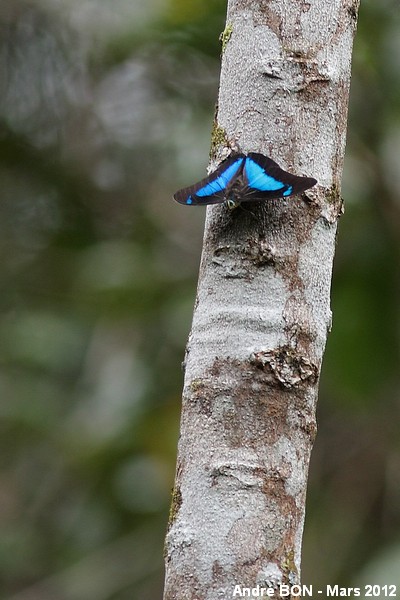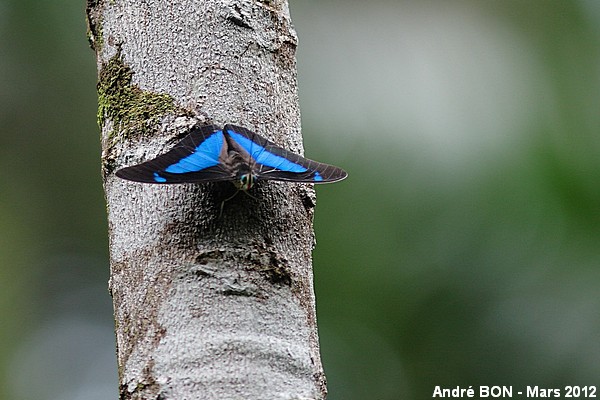

| Prepona sp. - Archaeoprepona sp. (Boisduval, 1836 - Fruhstorfer, 1915) |


|
|
Scientific name: Prepona sp. - Archaeoprepona sp. (Boisduval, 1836 - Fruhstorfer, 1915) Common name: French name: Order: Lepidoptera Suborder: Rhopalocera Family: Nymphalidae Subfamily: Charaxinae Wingspan: Up to 100 mm. Biotope: Tropical forest, high on trees in the canopy. They are sometimes observed landed on trunks, upside down. Geographic area: Central America and South America. Flight time: All year round. Number of generations : Caterpillar: Dark brown or pale brown, hairless, with two recurved horns on the head and a bifid tail. Host plant: |
The Prepona genus includes 10 species with 9 of them having a black upper side and blue markings. Some species also show orange markings on the upper side of the wings. The underside of the wings is greyish or brownish. The Archaeoprepona genus includes 8 species whose upper side is very similar to species of the Prepona genus. A view of the underside of the wings is required to differentiate both genera and to tell species apart. The butterflies of the Archaeoprepona genus show a sbubmarginal line of small ocelli, all about of the same size, on the underside of the hind wing. On butterflies of the Prepona genus the ocelli located at the apex and at the anal angle are clearly larger than the other ones. |
| [To know more about the Prepona sp. - Archaeoprepona sp.] [Next picture] [Top] |

|
I have shot this picture at Roura while I was canoeing on the Crique Gabriel. Here is one place I look forward to visiting again during a future trip to French Guiana. |
| [To know more about the Prepona sp. - Archaeoprepona sp.] [Previous picture] [Top] |

|
It is not possible to tell the genus and the species apart without a view of the underside of the wings. However, the layout of the blue marks matches rather well the Prepona pheridamas species which is widespread in the north of South America. The marginal edge of the fore wings is very concave. There is a rounded blue patch on the costal edge, followed by one or two blue tiny spots. Then there is a broad blue band, parallel to the outer edge and extending up to the anal angle of the hind wings. |